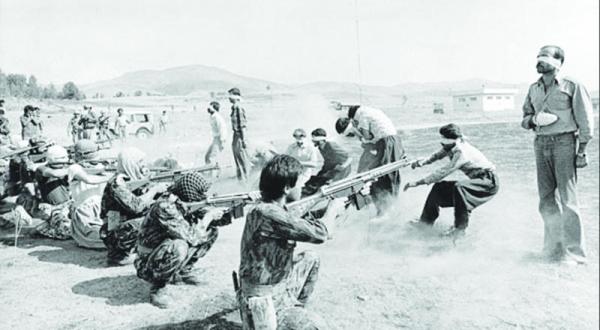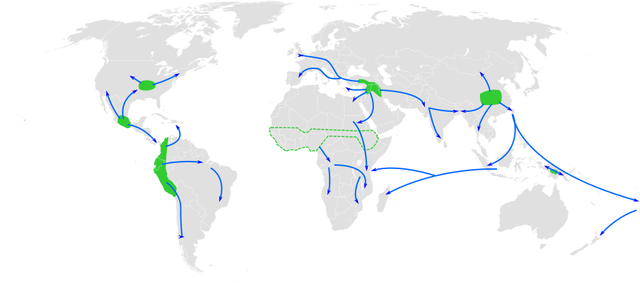Barry Grey
Banks, hedge funds and governments all over the world are entering a new week of trading with fear and trepidation. The US markets are closed Monday for the Martin Luther King Jr. holiday, but one can be certain that the Federal Reserve, the major Wall Street banks and the Obama administration will continue to be involved in intensive behind-the-scenes discussions with their international counterparts following the most disastrous two-week start of a new year in history.
Friday’s panic sell-off on stock markets from China and Europe to the US, with the Dow giving up 391 points and crashing through the 16,000 point barrier, capped off two weeks that erased $5.7 trillion from global share values.
The current sell-off, which has officially thrown stocks in the US and Europe into correction territory (more than 10 percent below recent highs) and the Chinese exchanges into bear market mode (down by more than 20 percent), has been fueled by mounting signs of stagnation and slump in the real economy. These include a sharp slowdown in China, plummeting prices for oil and other industrial commodities and new signs of economic deceleration in the US.
The mood spreading within financial circles was summed up by the Royal Bank of Scotland’s credit team, which sent a note advising clients that 2016 could be a “cataclysmic year” and urging them to “sell everything except high quality bonds.”
Warning that “in a crowded hall, exit doors are small,” the note predicted that major stock markets could fall by 20 percent and oil could drop from its current already depressed level of $29 a barrel to $16. “China has set off a major correction and it is going to snowball,” the note added.
The mood of foreboding is compounded by the intersection of economic turmoil with intensifying geopolitical conflicts and escalating wars, alongside political crises and mounting social tensions in country after country. The fact that the financial eruptions are playing out against the backdrop of a presidential election in the US that is already revealing a profound crisis of the American two-party system heightens the general sense of apprehension.
Whatever the short-term turn in the markets, the turbulence that has marked the new year reflects profound and deepening contradictions within the world capitalist system. After more than seven years of bailouts and trillions in virtually free cash for the banks and financial markets, compliments of central banks and governments in the US, Europe and Asia, the real economy has not only not recovered from the Wall Street crash of 2008, it is rapidly deteriorating.
The working class has been hammered with mass layoffs, wage cuts and austerity, while the rich and the super-rich have gorged themselves with profits derived from parasitic and socially destructive financial activities such as stock buybacks and mergers and acquisitions.
Wal-Mart’s announcement Friday that it is shutting 269 stores and slashing 16,000 jobs, including 154 stores and 10,000 jobs in the US, exposes the real state of economic and social conditions in America behind the official talk of economic “recovery”—epitomized just three days before in President Obama’s delusional State of the Union depiction of the US economy. “Anyone claiming that America’s economy is in decline is peddling fiction,” the president boasted.
The closure of these stores—coming on the heels of multi-store closure announcements by Macy’s and Sears-Kmart—means severe hardship for communities where Wal-Mart is the main employer and retail outlet. US industry is in a recession, as is freight transport. Some 40,000 coal mining jobs have been wiped out and coal production has fallen by 15 percent since 2008.
Now, record high levels of debt, in the form of emerging market corporate bonds, energy junk bonds and speculative bets on currencies and commodities, are threatening to implode along with inflated stock values. The underlying and deepening crisis in the real economy—starved of investment in the productive forces and the social infrastructure—is undermining the massive edifice of financial assets that has been built up on the basis of speculation, debt and outright swindling.
The decision of the Federal Reserve to begin raising interest rates, despite its intention to do so gradually and incrementally, intensifies the debt crisis and sends new shock waves through global currency markets, already roiled by a 35 percent rise in the dollar since 2011.
Even more fundamentally, profit rates are being squeezed. Last Monday, Alcoa reported a $500 million net loss in the fourth quarter of 2015. The earnings of Standard & Poor’s 500 companies are estimated to have fallen 4.7 percent during the quarter, the second straight quarterly decline. S&P 500 firms are expected to show zero profit growth for all of 2015.
The focus of attention is on the slowdown and crisis in China because the world’s second largest economy and major cheap-labor manufacturing platform has played such an oversized role in propping up world capitalism, especially since the 2008 crash. But the problems in China are an expression of a global crisis whose real center is the United States.
The rise of China as a global economic force is bound up with the precipitous decline of American capitalism, which is at the heart of the world capitalist crisis. The transformation of the Maoist-ruled country into a bastion of cheap labor and super-exploitation for the transnational corporations is the obverse of the decay of American industry and the increasingly predominant role of financial speculation in the US economy.
For decades, Wall Street has fueled one speculative bubble after another—the “Asian tigers,” the dot.com frenzy, the subprime mortgage scam—each of which has collapsed and given way to the next financial bubble. Meanwhile, the social infrastructure of the country has been left to rot and the working class driven ever deeper into economic insecurity and poverty.
The most significant underlying factor behind the threatened collapse of the current financial house of cards is the growth of working class resistance. The Chinese regime, corrupt to its bones, is fearful of the social and political implications of carrying through the scorched earth privatizing and job-slashing policies demanded by international capital and favored by the present ruling clique.
The massive Chinese working class is already stirring. Last year, the number of strikes and labor protests more than doubled compared to the previous year, and December saw a record high total of such struggles.
In the US, the ruling class is acutely aware of the growth of working class resistance, reflected in the mass opposition of autoworkers to the contracts rammed through by the United Auto Workers at the end of 2015, and this month by the sickouts organized by Detroit teachers independently of and in opposition to the teachers union. The growth of working class militancy and anti-capitalist sentiment, and the erosion of the grip of the right-wing corporatist unions, fills the corporate-financial elite and its political mouthpieces with dread.
It also impels them to prepare new and even more brutal attacks on workers’ social conditions and democratic rights. This must be answered by the development of the movement of the working class as a political struggle for the abolition of capitalism and establishment of socialism.


